Costs and Benefits of Advertising
Why would a company pay $7,667 per second just to air a commercial? Most likely to speak to the largest audience of potential customers. Advertisements help to ensure that customers are reminded to buy and use products. The most expensive advertising to date was $2.3 million for a 30 second television commercial that aired during the Super Bowl. Were the advertisements effective? Only if the company was talking to the right people potential and current customers. That’s what makes advertising work talking to the right people with the right message that encourages them to take action and buy your products.
Consider that the most profitable businesses rarely need to advertise. Why? The word of mouth among their loyal customers provides enough sales and profits that they don’t need to remind people to shop there or buy their products. Could that be your goal? Yes, but to ensure your current and potential customers are reminded to shop with you, you will need to advertise. Think of the advertisement as an insurance policy, ensuring you stay at the top of their minds with an open wallet.
What is Advertising?
Advertising refers to the array of communication media that a business can use to relate to its customers. Advertising is a paid endorsement of a product or service and is typically presented in print (yellow pages, billboards, flyers, newsletters, newspaper and magazines), electronic (Internet or television) or aurally (radio). The costs associated with advertising include both the creation and presentation of the message.
One of the few horticultural studies published on the effects of advertising on sales was conducted in North Carolina Cooperative Extension Service in 1997 by Charles D. Safley, Michael K. Wohlgenant and Cassandra DiRienzo on a study called “Factors Affecting Consumer Purchases of Fall Nursery Products: Fall 1997 Consumer Survey.” They asked garden center shoppers about their purchases and the advertising they saw prior to shopping. Most of the 139 shoppers who completed the survey were repeat customers. Over one-third said that advertisements regarding an upcoming plant sale had a large impact on their decision to shop at that particular garden center. The advertisements worked! Over half remembered seeing the newspaper advertisement (8 percent were newspaper subscribers), but less than 10 percent recalled seeing the garden center’s newsletter or yellow page advertisement. The effectiveness of any radio advertisements the business paid for was not reported. This provided evidence that many repeat shoppers did respond to (at least) printed advertisements about an upcoming sale.
Starting Out
Before any money is spent on advertising, construct a goal or desired outcome for the advertisement. Do you want to make customers aware of your new location? Do you want to remind them it’s time to purchase fall plants? Do you want to convey the new line of products you now carry (water gardens, night lighting)? Or, do you want them to visit you rather than the competition? Setting a goal will help you determine how much you will need to spend to accomplish that goal.
The second key to effective advertising is to know how to reach your current and potential customers. A good customer profile will show you where your current customers live (zip code), how old they are or even what size or value of residence they have. The more you know about your core customers, the easier it will be to reach them. Develop a solid profile of your customers and take it with you to talk with advertising sales people.
Advertising Success
After you’ve made some advertising goals and reviewed your customer profile, you’re ready to consider how you will evaluate the success of your advertisements. After all, why would you spend money to communicate if you are unable to evaluate whether or not your message got through to the right people? For each type of advertisement, consider how you will know you were successful. Now, you’re ready to examine some advertising alternatives: print, electronic and radio advertisements.
Yellow Pages. Yellow page advertising is a commonly used method of print advertisement. Many businesses place these ads so routinely that they automatically renew them each year. How do you know if yours works? Consider dedicating the least used line in a multiple line telephone for the ad. You could tally the calls received on the line that is advertised in the yellow pages. Or, simply make it a part of the conversation to ask callers where they found your telephone number. A tally sheet near the telephone or on the computer where the phone is answered is helpful. If you never get a call on that line, consider a smaller, or larger, ad next year. You can attract attention to your business with colorful ads, but do consider the investment relative to the number of calls you receive.
Newspaper. Another popular print medium is the newspaper. Carefully compare the demographics of newspaper subscribers to your customer profile. Readership varies greatly by age and income, so here is where a good understanding of your customer profile will pay off. When should you advertise in the newspaper? The natural tie-in is with a gardening column or article. However, smaller towns may not have many gardening articles (consider writing a few yourself). Gardening and food have a strong relationship, so consider advertising on the day food and recipes are featured. Nearly every size paper has some food features. Many newspapers now have some colored inks that can attract more attention. Aim for placement in the upper half and outer margin areas of the paper, which get greater attention. Keep newspaper ads simple, featuring one or two items. If you want to attract price-conscious shoppers, include the price in the ad.
Flyers/Newsletters. Flyers and newsletters should also get some consideration for your print budget. Flyers and newsletters are highly effective with an established customer base. Ask your customers’ permission to send them information and notices of sales and specials. Perhaps offer the sale to them a day ahead of the general public. Get customers to sign-up by asking them to enter a drawing, but be clear that their address will be used for the mailing. Flyers and newsletters can be formatted during off-peak times and updated and mailed.
Billboards. Billboards are a different type of print medium. You rarely have a choice in exactly which billboards are used. These can be highly effective advertisements in high-traffic areas when a simple message is used. Remember, the customer is often traveling at a high speed and will have very limited time to glance and read a few words. Our industry is such a visual one that an abundance of flowers or one simple flower can convey much information. Use this type of advertisement to supplement what you might be communicating in the newspaper or radio.
Television. Television can show the real beauty of your products in a way no other medium can. However, television commercials can be expensive to produce and air (remember the Super Bowl). You need to consider when your audience might be watching television, too. With cable and satellite television, this market is as highly fragmented as radio, making it difficult for many smaller retailer operations to reach their customers effectively. You might want to keep television commercials low on your list of priorities.
Internet. Much higher on your list of advertising priorities should be Internet advertising. Like any other form of advertising, you need to set some goals for what you want to accomplish over the Internet. It is critical to keep your Web pages up-to-date, as potential customers will notice pages that are old, much like seeing the same display in the key-merchandising window of the retail store. Some Web page designers will periodically update pages if you provide the content. You might even be fortunate enough to have someone on staff that has the skill set to keep your Web page sharp. Make time for them to keep the pages current and value their contribution to your overall advertising campaign. It is more important to offer current information than sales, although some companies are beginning to experiment with on-line sales. Keep good links to Web sites that help customers solve problems, and they will see you as a professional and expert. Also be sure to prominently display your hours of operation and contact telephone number so they can speak with you on the telephone or in-person if they have a more specific question. Put a counter on your Internet site to show the number of hits you get.
Radio. Radio is another good communication medium. Here, again, is when having a good customer profile will pay off. Radio is highly fragmented with many different radio stations appealing to very distinct groups of listeners. The radio sales staff will have a good idea of who listens to the station. You need to have a good idea of who shops with you (customer profile) and make sure they match closely. Since you don’t have the visual ability to communicate, you need to communicate exclusively with sound. You might say that plants don’t make sounds, but you can create the garden environment with sound. Kids laughing, people chatting, birds singing, water running, all contribute to the garden atmosphere. Radio spots are short, so you will need to repeat your key message or theme 4-7 times. The theme should be the goal of the ad.
Integrate your advertisements by displaying the newspaper ad at the store entrance. Play the radio ads on the in-store speaker system. Have the most recent newsletter or flier available for customers to take near the box they can use to enter the drawing. Mention newspaper or other print ads in your radio advertisement.
Did it Work?
How do you know if an advertisement worked? Asking customers is the most direct way. Ask them before you end a telephone conversation where they heard about you. Consider adding a tag line to the newspaper ad saying to mention this ad and receive something (nominal cost) for free such as a carnation, package of seeds or 5-percent discount. Remember, if you can’t measure the ad’s success, how will you know if it was a good investment?
One of the most common advertising myths is that a business should spend a certain percentage of sales on advertising. While the industry average for horticulture hovers around 3 percent of gross sales, this may be too much or too little for advertising, depending on your business goals and objectives. It may be too much if the business has enough sales and profits and simply wants to keep their name in front of the public. It may be too little for a company expanding by opening a second location or adding a new product line. To be truly effective, the advertisement should have a measurable goal. Then you will be able to calculate the cost and benefit of that advertisement.






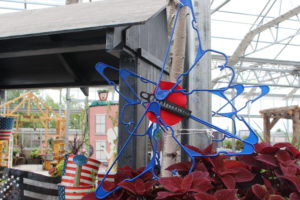

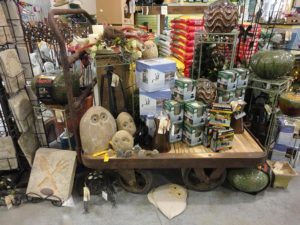

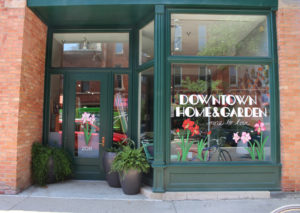
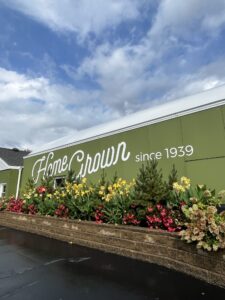
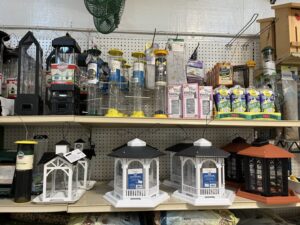

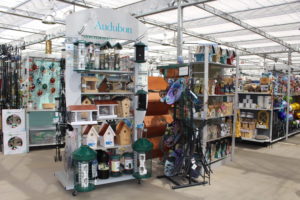

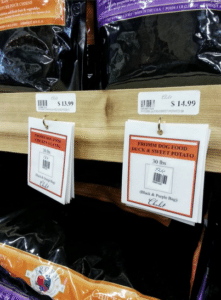

 Videos
Videos





